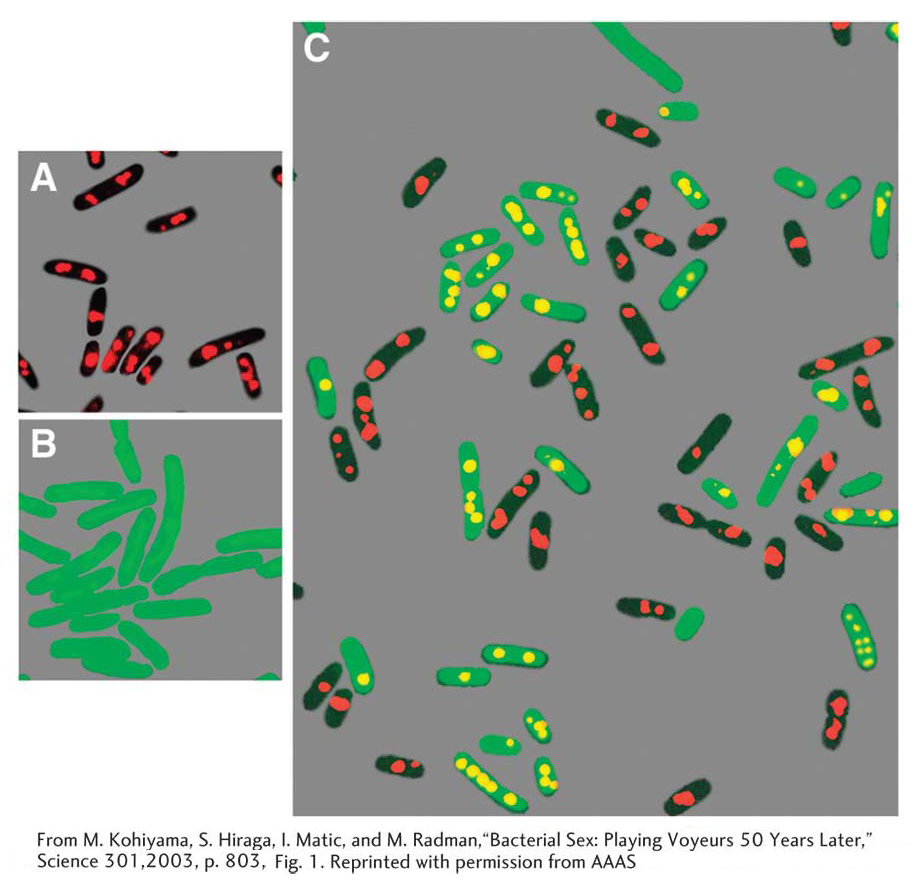
The photographs show a visualization of single- e-
[From M. Kohiyama, S. Hiraga, I. Matic, and M. Radman, “Bacterial Sex: Playing Voyeurs 50 Years Later,” Science 301, 2003, p. 803, Fig. 1. Reprinted with permission from AAAS.]